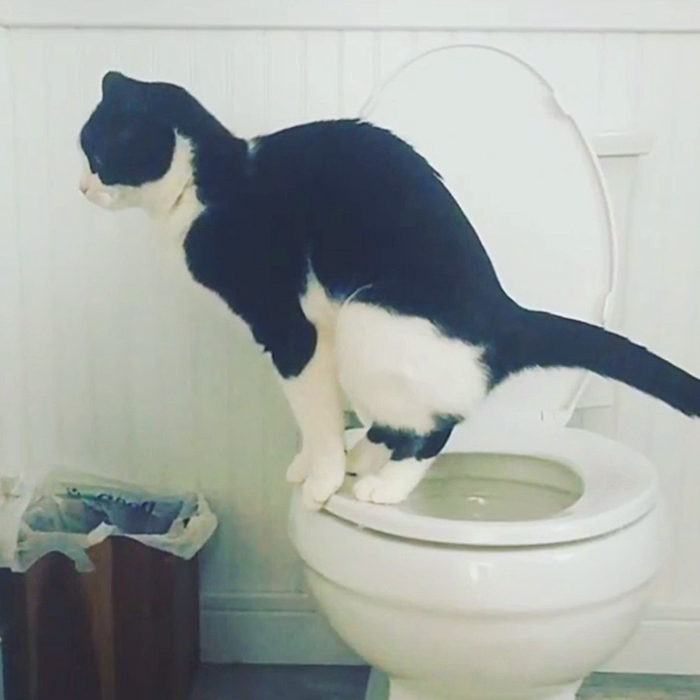Just how do you actually feel about Don’t flush cat feces down the toilet?

Introduction
As feline owners, it's essential to bear in mind exactly how we throw away our feline pals' waste. While it may appear practical to purge feline poop down the toilet, this practice can have damaging repercussions for both the environment and human health and wellness.
Alternatives to Flushing
Thankfully, there are more secure and much more responsible methods to deal with pet cat poop. Think about the adhering to choices:
1. Scoop and Dispose in Trash
The most usual technique of disposing of feline poop is to scoop it right into a naturally degradable bag and toss it in the trash. Make certain to use a specialized litter inside story and deal with the waste without delay.
2. Usage Biodegradable Litter
Choose biodegradable pet cat clutter made from materials such as corn or wheat. These clutters are environmentally friendly and can be safely dealt with in the trash.
3. Hide in the Yard
If you have a backyard, consider burying cat waste in a designated area away from vegetable gardens and water sources. Be sure to dig deep enough to prevent contamination of groundwater.
4. Install a Pet Waste Disposal System
Buy a pet dog garbage disposal system especially created for pet cat waste. These systems make use of enzymes to break down the waste, minimizing smell and ecological effect.
Health and wellness Risks
In addition to ecological issues, flushing feline waste can also present health threats to humans. Pet cat feces may consist of Toxoplasma gondii, a parasite that can trigger toxoplasmosis-- a potentially serious disease, specifically for pregnant females and individuals with weakened body immune systems.
Environmental Impact
Purging cat poop introduces unsafe microorganisms and bloodsuckers into the water, positioning a substantial risk to water ecological communities. These pollutants can adversely influence marine life and concession water top quality.
Conclusion
Accountable pet ownership expands beyond offering food and sanctuary-- it additionally involves appropriate waste monitoring. By avoiding flushing feline poop down the bathroom and going with alternative disposal techniques, we can decrease our environmental footprint and safeguard human wellness.
Why Can’t I Flush Cat Poop?
It Spreads a Parasite
Cats are frequently infected with a parasite called toxoplasma gondii. The parasite causes an infection called toxoplasmosis. It is usually harmless to cats. The parasite only uses cat poop as a host for its eggs. Otherwise, the cat’s immune system usually keeps the infection at low enough levels to maintain its own health. But it does not stop the develop of eggs. These eggs are tiny and surprisingly tough. They may survive for a year before they begin to grow. But that’s the problem.
Our wastewater system is not designed to deal with toxoplasmosis eggs. Instead, most eggs will flush from your toilet into sewers and wastewater management plants. After the sewage is treated for many other harmful things in it, it is typically released into local rivers, lakes, or oceans. Here, the toxoplasmosis eggs can find new hosts, including starfish, crabs, otters, and many other wildlife. For many, this is a significant risk to their health. Toxoplasmosis can also end up infecting water sources that are important for agriculture, which means our deer, pigs, and sheep can get infected too.
Is There Risk to Humans?
There can be a risk to human life from flushing cat poop down the toilet. If you do so, the parasites from your cat’s poop can end up in shellfish, game animals, or livestock. If this meat is then served raw or undercooked, the people who eat it can get sick.
In fact, according to the CDC, 40 million people in the United States are infected with toxoplasma gondii. They get it from exposure to infected seafood, or from some kind of cat poop contamination, like drinking from a stream that is contaminated or touching anything that has come into contact with cat poop. That includes just cleaning a cat litter box.
Most people who get infected with these parasites will not develop any symptoms. However, for pregnant women or for those with compromised immune systems, the parasite can cause severe health problems.
How to Handle Cat Poop
The best way to handle cat poop is actually to clean the box more often. The eggs that the parasite sheds will not become active until one to five days after the cat poops. That means that if you clean daily, you’re much less likely to come into direct contact with infectious eggs.
That said, always dispose of cat poop in the garbage and not down the toilet. Wash your hands before and after you clean the litter box, and bring the bag of poop right outside to your garbage bins.
https://trenchlesssolutionsusa.com/why-cant-i-flush-cat-poop/

Do you appreciate reading about How to Dispose of Cat Poop and Litter Without Plastic Bags? Place a comment further down. We'd be interested to find out your views about this content. We are looking forward to see you back again later on. Are you aware of another individual who is in to the topic? Please feel free to promote it. I praise you for your time. Please check our site back soon.
Get Estimate
Comments on “Prevent Plumbing Problems: Never Flush Cat Poop Down Your Toilet - Professional Guidance”